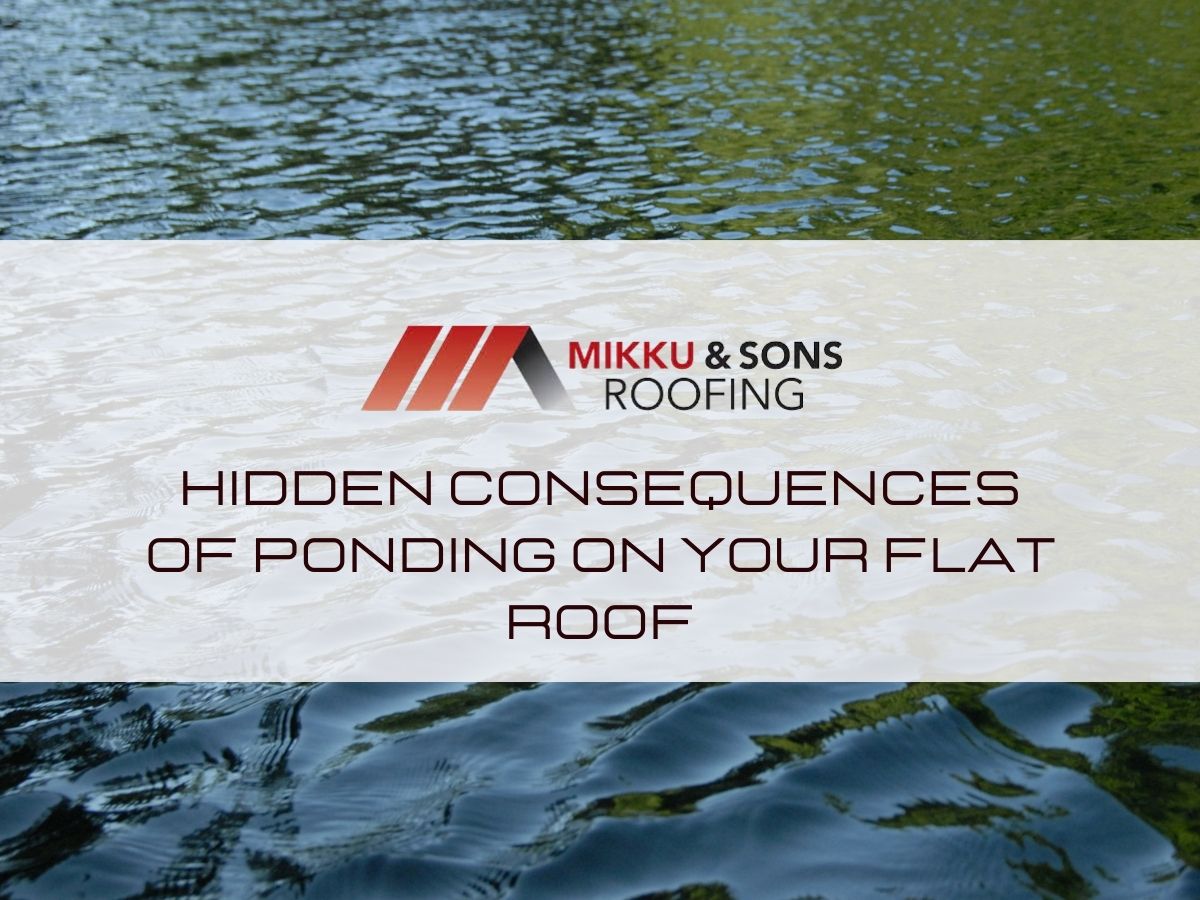

Even if you have a flat roof, all roofs are designed to do one thing in common: properly drain still water from the top. Regardless of the style of roof you have, you want to avoid the problem known as “ponding” to the best of your ability. For those who don’t know, ponding is when water builds up in a singular area and doesn’t go away even after a few days have passed.
Although there are different reasons for ponding to occur, it is most commonly caused by crushed insulation from foot traffic on the roof, or by clogged up drainage. Whichever the case may be, it still stands that if you have pooling water that you should address the issue right away, or else you risk having leaks develop inside our home. This can cause the materials to break down and possibly even cause interior water damage or other drainage problems. According to the AZ Registrar of Contractors, minor amounts of ponding will occur on most flat roofs, but should be addressed if it doesn’t automatically drain within 48 hours.
No matter how small the puddle is, if you have standing water then you are sure to have bugs close behind. One of the more common pests that are drawn to still water are mosquitoes, which spend their time breeding and living by the water – something you want to be sure is cleared off before they make your roof their home!
When bugs and water are gathered in one place, you can be certain that birds will follow soon after. Not only are they interested in the puddles for themselves, but birds will use this as an opportunity to nest and feed on the surrounding insects. Not only are the noisy, but the dangers of contamination from bird droppings increases when you have ponding water attracting them to your roof.
Plant growth may start as small as a spot of algae, but can develop quickly and grow out of control – such as a mold problem developing in your walls. Roofs that trap moisture or have leaks will not only affect the appearance of your home, but also cause it to grow damaged quicker over time and possibly even cause an environmental health hazard.
Any amount of pooled-up water will start to fade into your roof and cause a certain amount of discoloration. This is not only attractive to look at, but also causes deterioration that may cause improper cooling to occur.
Although we don’t experience harsh winter freezes in Phoenix, there is still a chance that the winter nights can freeze sill water on your roof. This will damage the roof membrane, since water expands when frozen – meaning this is a situation that you want to deal with before the weather turns chilly!
